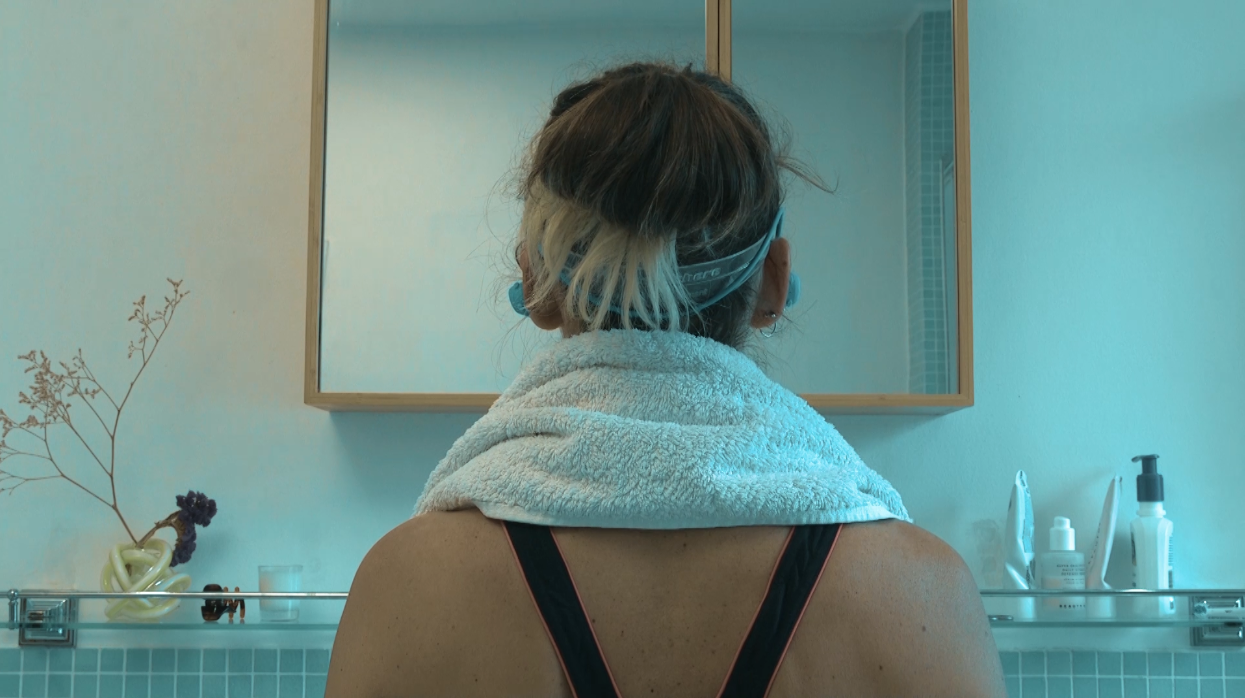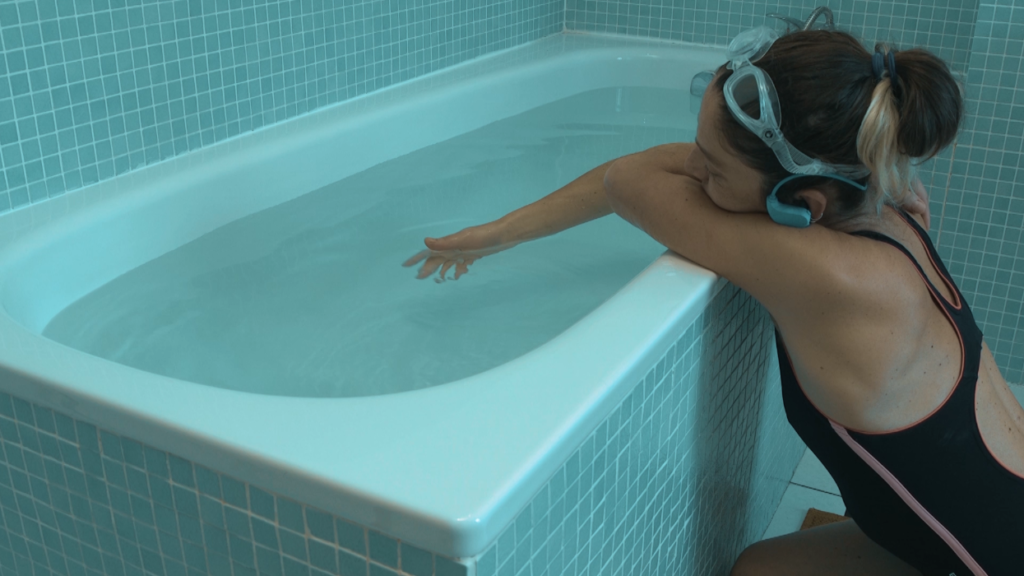Swimming Home – Silvia Mercuriali
A review of Swimming Home, a new work by Silvia Mercuriali in a genre she terms ‘autoteatro.’ What is that, you ask? Read on to find out!
Autoteatro: You Are The Performer
Perhaps you are not comfortable yet with being back in a theatre. Perhaps the practicalities of spending an evening out make it impossible. Or perhaps you are just interested in works which push the boundaries of what theatre is. Or can be. In any of these cases, there is a world out there of interesting, creative experiences. In today’s post we will explore the work of one such boundary-pushing theatremaker, Silvia Mercuriali, and her newest production, Swimming Home.
Mercuriali describes Swimming Home as a work of autoteatro. What exactly does that mean? Mercuriali’s website describes it as a strategy, in which “audience members perform the piece themselves following simple audio instructions.” It takes a bit of preparation: for this work you need an app, phone and headphones, props and a costume. You then ‘perform’ the work yourself, in your own home. You are the actor, and the audience. Also the designer and technician, I guess. It’s like an upending of some of the experimental works I’ve seen which combine sound recordings with outside world experiences (c-o-n-t-a-c-t, Behind Closed Doors). It’s less cerebral, less about execution or syncronisation, and more introspective and emotion-driven.
The imaginative possibilities of autoteatro are almost boundless. Other recent works include an interactive tour of a supermarket; a short opera choreographed for a single eye. If you can think of it, autoteatro can do it. It’s the ability to think of these ideas in the first place (and to execute them) that I really admire.
Swimming Home
So let’s discuss Swimming Home in more detail. The work draws on interviews with swimmers and water lovers as well as swimming coaches. First hand excerpts are interspersed with instructions to the listener as actor/audience. You start in your bathroom, bath drawn (or shower prepared), in a swimsuit with goggles and towel at the ready. The audio guides you through a series of actions and imaginative exercises which connect you to your physical location, your body, and the water. When was the last time you contemplated the surface of water? The action and reaction of waves? In a little over 30 minutes Swimming Home builds up to a point where finally plunging your head into the water feels like a culmination. A release.
I was surprised by how I responded to Swimming Home. Reading about it beforehand, I found it intriguing. “I’m not really a bath person”, I thought, “but let’s give it a go.” It also strays at times into the territory of guided meditation or mindfulness, which I would not normally rush to participate in. But despite these hesitations, I was able to give myself over to the experience; following the instructions and really thinking about water and my connection to it.
Which brings me to the other interesting dynamic to this theatrical strategy: the shift in control and power. In autoteatro the audience is no longer passive; there are no actors who know exactly what is going to unfold on stage. There is no voyeuristic watching of a story unfold. No waiting for someone to start the applause at the end. There’s only you. You are not fully in control though, you must submit to the voices in your ear for Swimming Home to be effective. I think it’s a smart choice by Mercuriali to stream the work only at certain times. Given half a chance I would probably have paused it, gone back to listen to certain details over again. But I didn’t have that choice. Like an actor, I had to be ready for the show to open, and I had to keep up. The show must go on!
Final Thoughts
For me, it is that last point – the structured delivery of Swimming Home, which ensures that it is theatre after all, rather than something else entirely. I enjoyed the feeling of anticipation, of being slightly exposed, of not knowing what was in store. It was also nice to finish up ‘at the theatre’ and wander straight into the living room for a glass of wine. It’s more isolating than your typical theatre experience in the sense that there is nobody to discuss it with afterwards, no audience reaction, but that has prompted me to think about it all the more carefully in the day or so since I took the plunge (pun intended).
In summary, I would recommend Swimming Home for any number of reasons (as I set out at the beginning), but especially if you want to try something that is just refreshingly different. And I’m not the only one who has been enjoying it – DIY Swimming Home runs alongside it as a photo project and encourages you to submit a photo of your own experience.
The ‘show’ is at set times as I mentioned earlier, and you need to buy tickets at least two hours in advance. You can find more information here. There are even Swimming Home gift boxes – perhaps an early Christmas idea for the theatre and/or swimming lover in your life?
Salterton Arts Review’s rating: 3.5/5
Swimming Home continuously available, check website for timings. Versions in French and Russian coming soon.



What a clever idea…I also thought of guided meditation when I read the description.